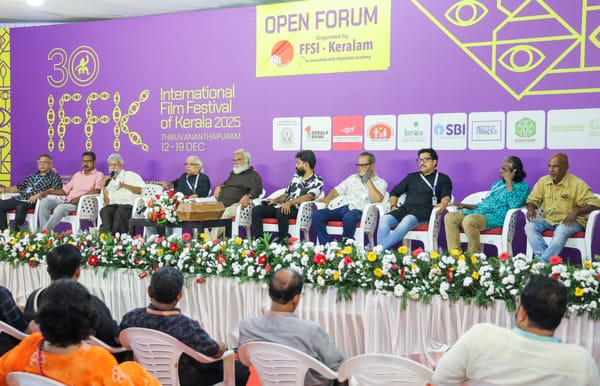Pattanam: A Paradise of small finds telling big stories!
Pattanam, a small sleepy village in Ernakulum district, Kerala, located about four kilometres from the Indian Ocean coast. A paradise of small finds with the potential to tell big stories.

After a rain, it was always a delight for a little girl as she picked beads and more beads from around her courtyard and added it to the nice little collection she had already made. People in the area also fell upon shards of pottery, baked bricks and other artefacts. And all this from around their neighbourhood. These discoveries drew the attention of archaeologists, historians, scholars, researchers to the place. And the place – Pattanam, a small sleepy village in Ernakulum district, Kerala, located about four kilometres from the Indian Ocean coast. A paradise of small finds with the potential to tell big stories.
In 2004, Centre for Heritage Studies, Thripunithura (Kerala, India) conducted trial excavations giving stratigraphic evidence of the archaeological importance of the village. And in 2007, the Kerala Council for Historical Research (KCHR) headed by Dr P J Cherian began excavations at Pattanam.
Dr Cherian mentioned, “One important aspect about archaeological research here is that it is multi-disciplinary and collaborative. Collaborative in the sense whenever we recover artefacts that are from Europe, Africa, China and other places, we seek the help of experts from the British Museum, Oxford University, Pisa University or the Palace Museum China in order to understand their context in a wider perspective. China has also lent technical support to create a database for Pattanam Pottery. And they are training our researchers in petrographic analysis. So the research project has now evolved into an international project in material culture studies.”
Dr Cherian has been presently doing field work in South China looking for Indian maritime connections. He attended the Shanghai Archaeological Forum (SAF) 2015 to present the research before a global archaeology community at the Shanghai University. Pattanam was selected by SAF as one of the top 20 archaeological research projects of the world.
He stopped by to visit the Museums of Singapore on his way back to Kerala. He also gave a presentation, “East Met West 2000 years ago in Kerala,” at the Singapore Malayalee Association (SMA).
Pattanam means port city in Prakrit language and even in current usage, like Valapattanam in Malabar or Nagapattanam in Tamil Nadu. Most of the Kerala was part of the Chera kingdom of the ancient Tamilakam (ancient Tamil country, 3rd c BCE to 5th c CE)
Excavations at Pattanam have unearthed artefacts like a 6m long canoe made of Anjili (Artocarpus hirsutus) wood, a wharf, Chera coins and pottery belonging to various parts of the world. Their chronology established by stratigraphy, radiocarbon and AMS dating (Accelerator Mass Spectrometry) have revealed that Pattanam was an urbanized and flourishing port. And studies continue to reveal new information on the critical role Pattanam played in the maritime trade network that involved 40 other contemporary sites extending from Rome in the west to Guangzhou on the Chinese Coast.
Muziris aka Muchiri Pattinam is prominently mentioned in the Tamil Sangam and Greco-Roman literature, especially in the ancient Tamil epics of Silapathikaram and Manimekalai. Pattanam could have been an integral part of Muziris or probably Muziris itself.
When Mr Dinesh Kumar, Cultural Secretary of SMA, enquired, “How relevant are these studies in the present day context?” Dr Cherian promptly replied that the past is a treasure house that can answer Who am I? Where did I start my journey? Where am I heading to? Otherwise, we will be permanently locked in the present. It is a subversive knowledge domain with the strength to redefine us.”
And what did Dr Cherian have to say about his visit to the Singapore Museums, Singapore National Museum and the Asian Civilizations Museum?
“I found them well designed and communicative. The best attraction for me was the ‘Tang Shipwreck’ in the Asian Civilisations Museum. I think they are the oldest exhibits (9th century AD) in the Museum. Many artefacts look similar to those found at the Kollam port site in Kerala. KCHR had done some salvage archaeology at Kollam in 2014 and is planning experimental digs.
I also liked the way the religions were portrayed in the Singapore museums as thought systems rather than those with rigid rules, Gods and Goddesses. The galleries on Hinduism and Buddhism were unique - as streams of thoughts that unlike institutionalised religions may help us to act from inside rather than being walking exhibits of overt symbols, dress codes, dietary restrictions etc.
Museums of Singapore reflect the cosmopolitan cultures which celebrate the unity in diversity, in which Malayalee and Tamil cultures from ancient Tamilakam days might have played a significant role. Modern day Malayalees and Tamils are the descendants of that great tradition.”
Dr Cherian has also initiated ‘The Green Archaeology Project’ as an attempt to transform Pattanam heritage village into a garden of organically grown spices and medicinal plants by adopting eco-sensitive and people centric approach. The villagers are empowered to remain as custodians of the heritage. He urges the people to play a meaningful role in transforming Pattanam village into a global model for heritage conservation and an advanced centre like India’s ancient Nalanda University.
“East Met West 2000 years ago in Kerala,” the Presentation, was given at the Singapore Malayalee Association on 24 Dec 2015.




